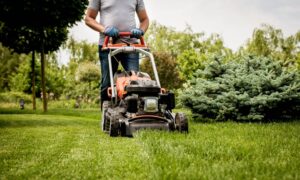CPAP Devices: A Comprehensive Guide to Sleep Apnea Treatment
Global CPAP devices market size was valued at USD 2.91 billion in 2023 and is projected to reach USD 4.89...

Introduction
Continuous Positive Airway Pressure (CPAP) devices have revolutionized the treatment of sleep apnea, a common sleep disorder affecting millions worldwide. These devices ensure a steady flow of air into the airway, preventing interruptions in breathing and improving sleep quality. This article explores CPAP devices, their benefits, types, features, challenges, and best practices for optimal usage.
Understanding Sleep Apnea
Sleep apnea is a condition characterized by repeated pauses in breathing during sleep. The most common types include:
- Obstructive Sleep Apnea (OSA): Caused by airway blockage due to relaxed throat muscles.
- Central Sleep Apnea (CSA): Occurs when the brain fails to send proper signals to breathing muscles.
- Complex Sleep Apnea Syndrome: A combination of OSA and CSA.
Untreated sleep apnea can lead to serious health issues, including high blood pressure, heart disease, stroke, diabetes, and cognitive impairments.
What is a CPAP Device?
A CPAP device consists of three main components:
- CPAP Machine: Generates a continuous stream of pressurized air.
- Tubing: Delivers air from the machine to the mask.
- Mask: Worn over the nose or mouth to direct airflow into the airway.
The device ensures that the airway remains open, reducing apnea episodes and improving sleep quality.
Benefits of CPAP Therapy
1. Improved Sleep Quality
CPAP therapy helps users achieve uninterrupted sleep, reducing daytime fatigue and improving cognitive function.
2. Reduced Risk of Cardiovascular Diseases
By maintaining normal oxygen levels, CPAP therapy lowers the risk of heart disease, hypertension, and stroke.
3. Better Mental Health
Consistent CPAP use can alleviate symptoms of depression and anxiety linked to sleep deprivation.
4. Enhanced Energy Levels
Better sleep leads to increased energy, productivity, and overall well-being.
5. Lower Risk of Type 2 Diabetes
CPAP therapy has been associated with improved insulin sensitivity and better glucose control.
Types of CPAP Devices
1. Standard CPAP Machines
These provide a fixed level of continuous airway pressure throughout the night.
2. Auto-Adjusting CPAP (APAP) Machines
APAP devices adjust pressure levels based on real-time airway resistance, ensuring optimal therapy.
3. Bi-Level Positive Airway Pressure (BiPAP) Machines
BiPAP machines deliver different pressure levels for inhalation and exhalation, suitable for patients with complex sleep apnea or breathing difficulties.
Features to Consider When Choosing a CPAP Device
1. Pressure Settings
Choose a device with adjustable pressure levels to match individual needs.
2. Humidification System
Integrated humidifiers prevent dryness and irritation in the airway.
3. Mask Compatibility
CPAP masks come in various styles, including nasal masks, full-face masks, and nasal pillows. Finding the right fit ensures comfort and effectiveness.
4. Portability and Travel-Friendly Features
Compact CPAP machines with battery options are ideal for frequent travelers.
5. Noise Levels
Modern CPAP devices operate quietly to minimize sleep disturbances.
6. Data Tracking and Connectivity
Advanced models offer Bluetooth and Wi-Fi connectivity, allowing users and healthcare providers to monitor therapy effectiveness.
Common Challenges and Solutions in CPAP Therapy
1. Mask Discomfort and Air Leaks
- Ensure the mask fits properly and adjust straps for a secure seal.
- Try different mask styles if discomfort persists.
2. Dry Mouth and Nasal Congestion
- Use a humidifier to add moisture to the airflow.
- Consider switching to a full-face mask if breathing through the nose is difficult.
3. Difficulty Adapting to CPAP Therapy
- Start with short sessions while awake to get used to the machine.
- Use the ramp feature to gradually increase pressure levels.
4. Claustrophobia or Anxiety
- Opt for minimal-contact masks such as nasal pillows.
- Practice relaxation techniques before bedtime.
5. Machine Noise Disturbance
- Position the machine away from the bed and use a noise-reducing mat.
- Choose a model with ultra-quiet operation.
Best Practices for CPAP Device Maintenance
1. Regular Cleaning of Mask, Tubing, and Humidifier
- Wash components with mild soap and water weekly.
- Replace filters as recommended by the manufacturer.
2. Proper Storage
- Keep the machine in a clean, dry place to prevent dust buildup.
3. Scheduled Equipment Replacement
- Replace masks, tubing, and cushions periodically to maintain hygiene and effectiveness.
4. Monitoring Therapy Compliance
- Use data tracking features to ensure consistent usage and effectiveness.
Future Trends in CPAP Technology
1. Smart CPAP Devices
AI-powered CPAP machines can analyze sleep patterns and automatically adjust settings for improved therapy.
2. Portable and Travel-Friendly Models
Smaller, battery-operated CPAP machines provide greater flexibility for travelers.
3. Advanced Mask Designs
New materials and ergonomic designs improve comfort and reduce air leaks.
4. Integration with Wearable Technology
CPAP machines can sync with smartwatches and fitness trackers to provide a holistic view of sleep health.
Source: https://www.databridgemarketresearch.com/reports/global-cpap-devices-market
Conclusion
CPAP devices play a crucial role in managing sleep apnea, enhancing sleep quality, and preventing related health complications. With various types and features available, choosing the right CPAP device requires careful consideration of individual needs. Overcoming challenges and following best practices can lead to successful long-term therapy, ultimately improving overall well-being.




